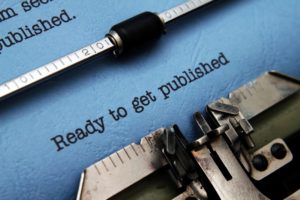
Congratulations on finishing your book! Now that you’re past the most challenging hurdle, you must face another critical task to help you present your work beautifully. The art of book publishing goes beyond creating captivating stories or profound ideas within the pages. The choice of paper and ink also significantly influences the reading experience of every bibliophile in the world. It’s also relevant in attracting potential readers because even the simple feel of the paper in their hand and the smell of the ink may compel people to buy a book.
Today, there’s a multitude of paper and specialty chemicals used in book publishing, and understanding the nuances will help you unlock the power to create a book that doesn’t only engage readers intellectually but also captivates them aesthetically. These seemingly tiny details can shape the narrative of your literary creation.
Read on to learn ways to choose the right paper and ink that’ll allow you to create a visually appealing and enduring masterpiece.
- Understand Paper Types
There are many types of paper available in book publishing, and it’s essential to understand their characteristics. Here are some common paper types to consider:
- Coated paper – It’s typically made of clay with a smooth and glossy finish. This type of paper is ideal for books with many photographs or illustrations, as the paper enhances the images’ color vibrancy and sharpness. The coated paper gives great ink holdout, preventing the ink from oozing into the paper fibers and making the images on the final print crisper and polished. This paper finds common usage in coffee table books, art books, cookbooks, and magazines.
- Uncoated paper – The opposite of coated paper, it has a natural and textured feel giving readers a more tactile experience. Since the ink absorbs into the fibers, it results in a softer appearance and less vibrant colors. Many novelists love uncoated paper since it lends the book a more traditional and classic aesthetic. It’s a common choice for literary works with extensive textual content.
- Specialty paper – To add a distinctive touch to the book, some authors prefer specialty papers such as recycled, handmade, and textured papers. Their embossed patterns and unique finishes add an extra dimension and visual interest. They frequently find usage in genre-specific books and design-centered publications.
Each paper type provides distinct characteristics, but the choice ultimately depends on your desired aesthetic, type of content, and target audience.
- Appraise Weight And Thickness
The finished product’s durability, feel, and overall appearance will rely on the weight and thickness of the paper you use. The weight affects the final printed material’s thickness, stiffness, and opacity. It’s usually expressed in grams per square meter (gsm) or pounds (lbs).
Here are some of the standard weight categories:
- Lightweight paper – It falls within the range of 60-90 gsm. Lightweight paper is often used for mass-market paperback books, where cost efficiency and reduced shipping weight are important considerations. One downside of lightweight paper is the slight transparency or show-through when printing on both sides.
- Medium-weight paper – Its weight is typically between 90-120 gsm. Many authors and publishers like it because it balances durability and cost-effectiveness. Many use it to print trade paperbacks and novels. This weight range offers sufficient opacity and durability without adding excessive bulk to the book.
- Heavyweight paper – It’s commonly used for high-quality art books, coffee table books, or limited-edition publications. The heavyweight paper provides a substantial and luxurious feel, allowing for better color reproduction and increased durability. The book will withstand the test of time, preserving the images even under dire conditions.
On the one hand, thickness refers specifically to the paper’s caliper, measured in micrometers (µm) or points (pt). The thicker paper adds substance and a more substantial feel to a book, but it also increases weight and printing costs. Conversely, thinner paper may offer cost savings but can be more susceptible to wear and tear.
Choosing the paper’s weight and thickness will ultimately depend on your budget, target audience, and the book’s intended use. Collaborate with your printer to determine precisely what’s best for your needs.
- Printing And Ink Considerations
You may select between offset and digital printing. Offset is the most used, with more flexibility in choosing the ink and paper you’d like. It’s also suitable for large-scale printing. On the other hand, digital printing is used mainly by print-on-demand services and those that need only smaller quantities at a time.
The ink type and quality will significantly impact the visual appeal, durability, and reading experience. When selecting the one for your book, consider the following:
- Soy-based ink – An eco-friendly option made from soybean oil, it offers vibrant and consistent colors without sacrificing the environment’s welfare. It also won’t fade over time and is less likely to smudge.
- Vegetable-based ink – Another eco-friendly option with fewer volatile organic compounds (VOCs), it also provides excellent color reproduction.
In choosing an ink, let your printer know how vibrant you’d like the final output to be, the fade resistance, and if you have any environmental considerations. Additionally, you may inquire about other options, such as adding special effects or embellishments to your book. These enhancements can elevate the visual appeal of your masterpiece and make your book stand out on the shelf.
Final Thoughts
The choice of ink and paper can raise the status of your book from a mere compilation of words to a work of art that engages the senses and leaves a lasting impression on the readers. Take the time to embrace this art and collaborate closely with your printer to make your creation come to life.






